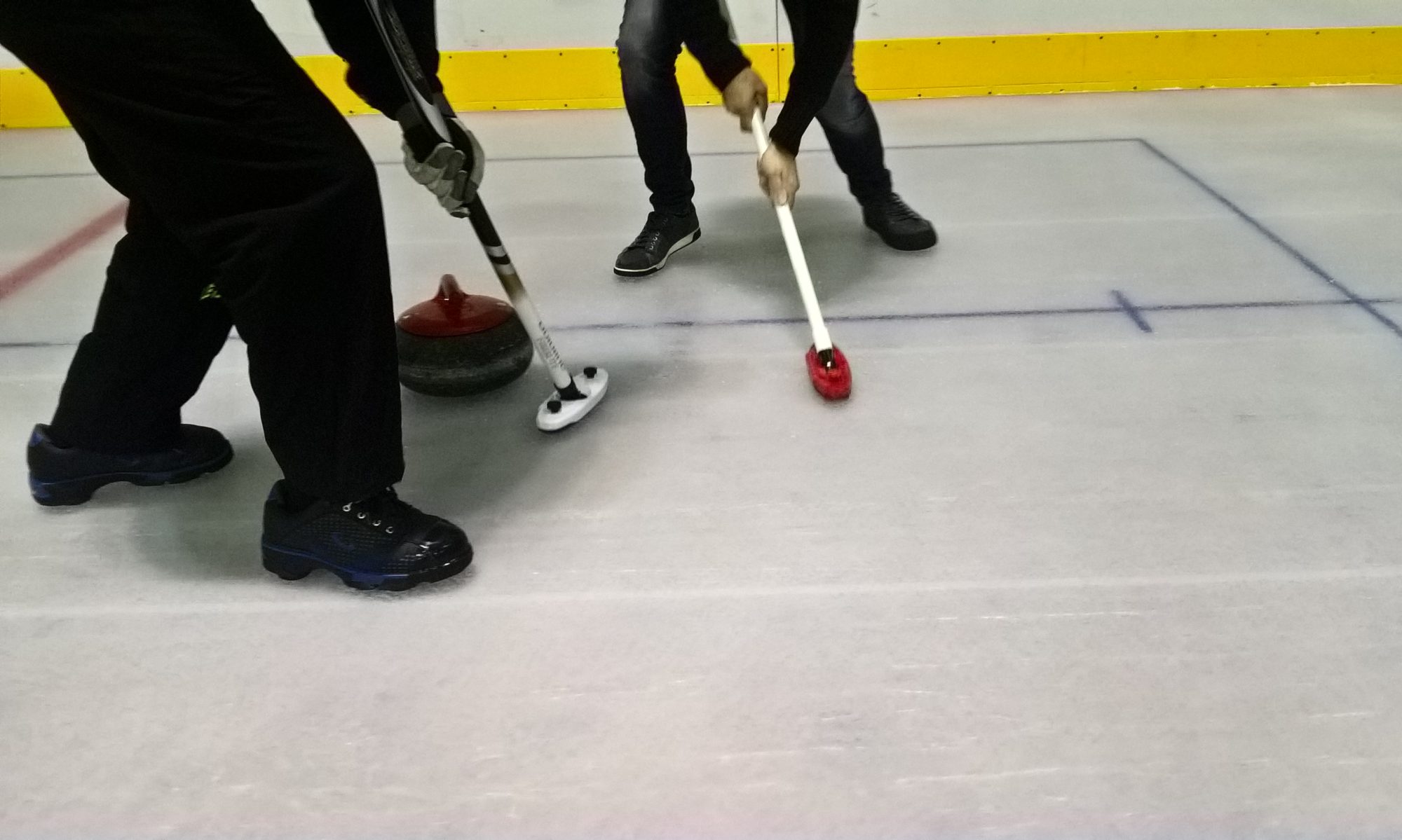Curling is a very old Scottish sport. It’s not known when the Scots first began to play Curling but in the Smith Institute in Stirling is the oldest know curling stone with the date 1511 engraved on it. The first report of a Curling match (Bonspiel) dates from 1541 and records a match between two monks from Paisley Abbey, near Glasgow. And in a poem written in 1620, a Mr. James Gall is said to be a big fan of curling.
Ancient Scotland was a poor country. The cities were small, the land was poor and unimproved and therefore not very productive. However, then as now, sports were very popular, perhaps too popular because in 1457 the Scottish Parliament prohibited football and golf because they caused riots. However, curling wasn’t endangered by this prohibition perhaps because the rocks were too heavy to hit an opponent with!
The first Curling stones weighted only 2 or 3 kg. They were shaped like a hand and so they were called “loofies” (loof = hand in the Scots dialect). In the course of time, the stones evolved into modern ones. A handle was added and they became circular like modern stones. In the beginning everybody knew the basic idea, that you must propel the stone from A to B, but no precise rules were established. As it was played on frozen ponds and lakes, the dimensions of the playing surface (rink) was not defined and there were no limits to the size and weight of the stone. That’s why some real boulders appeared in 18th Century. The biggest one, the “Jubilee Stone”, weighed 58.5 kg. If this were still the case today, Curling would be a sport only for strong men. Fortunately, evolution took another path.
Curlers adopted the “Round Stones” weighing approximately 20 kg, but the first hollow-ground stone was used in 1784 by Mr. Tam Pate. (Hollow-ground means that the stone sits above the ice upon a thin circle of rock, instead of the whole base making contact with the ice). As a consequence of this, he was able to make the stone deviate from a straight line as it travelled along the ice. Today we call this curl. Before that time, stones did not curl. Hence we know that the word Curling does not come from the verb “curl”, though the origins of the name are now lost. (See here for further information)
The first Curling club was founded in Kinross in 1668 and it played on Loch Leven. The first national association was the Grand Caledonian Curling Club (founded in 1838). In 1843, the club became the Royal Caledonian Curling Club. This Club was the headquarters of the World Federation till 1966 when the ICF (International Curling Federation) was founded. From 1991 the ICF has been called the WCF (World Curling Federation).
Curling is played on equal terms by men and women, although there sometimes are separate competitions for men and women (for example at the Olympic Games).



